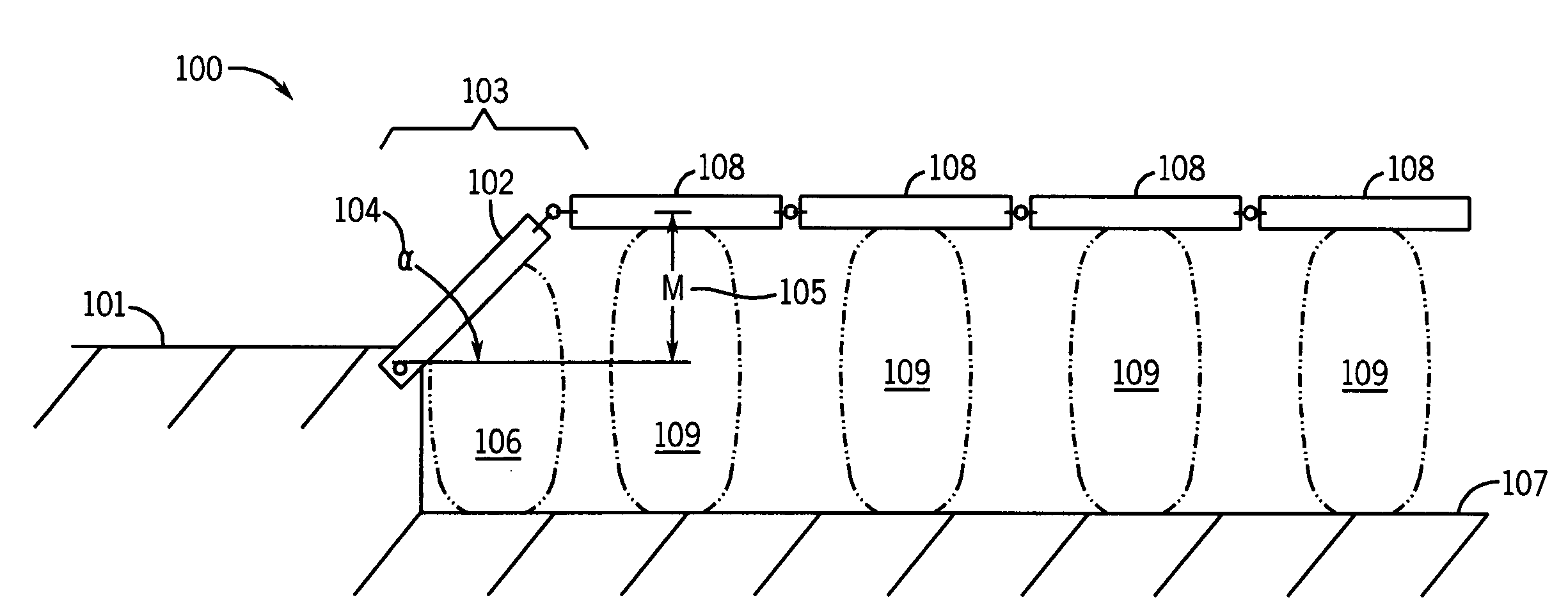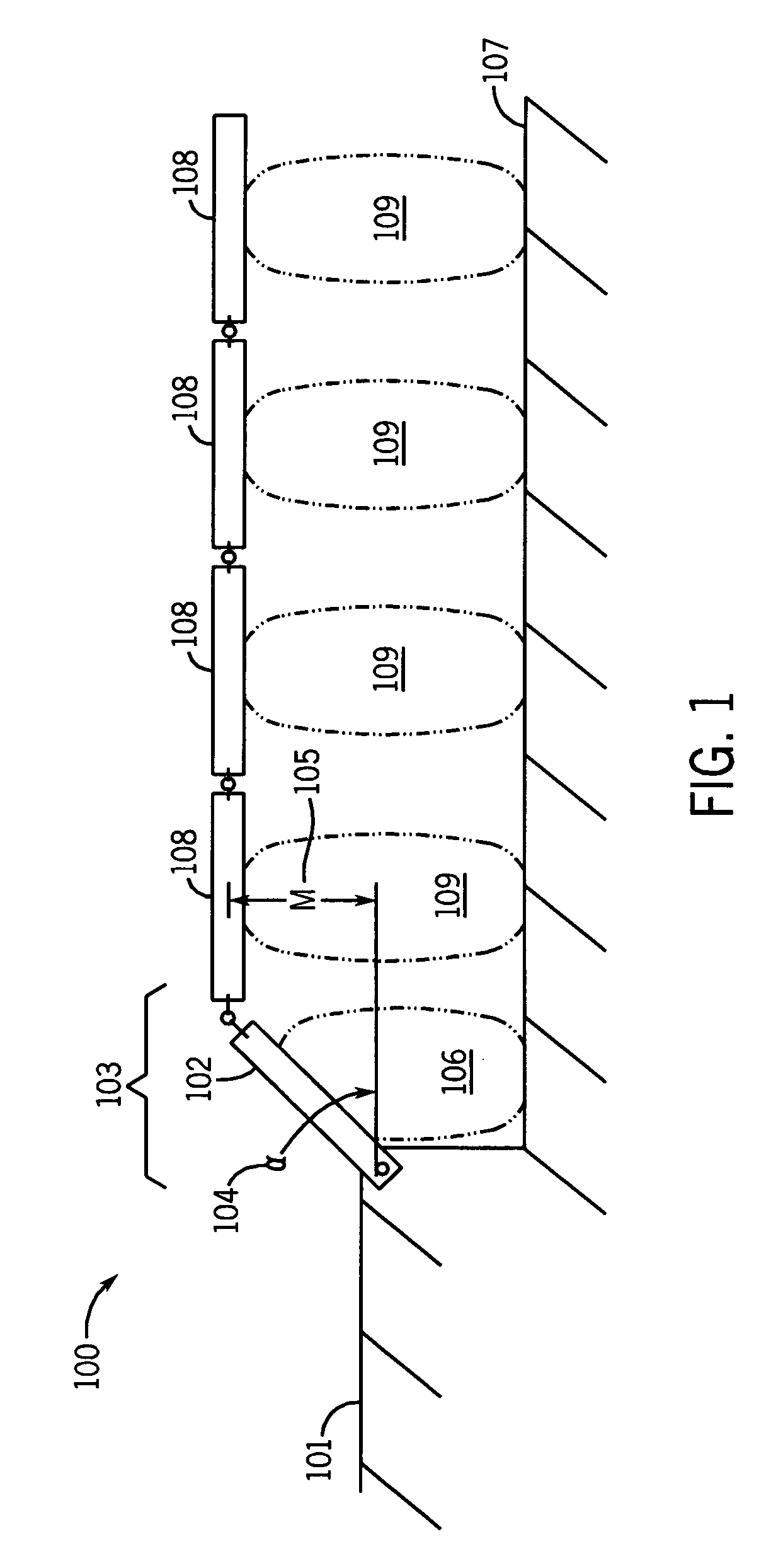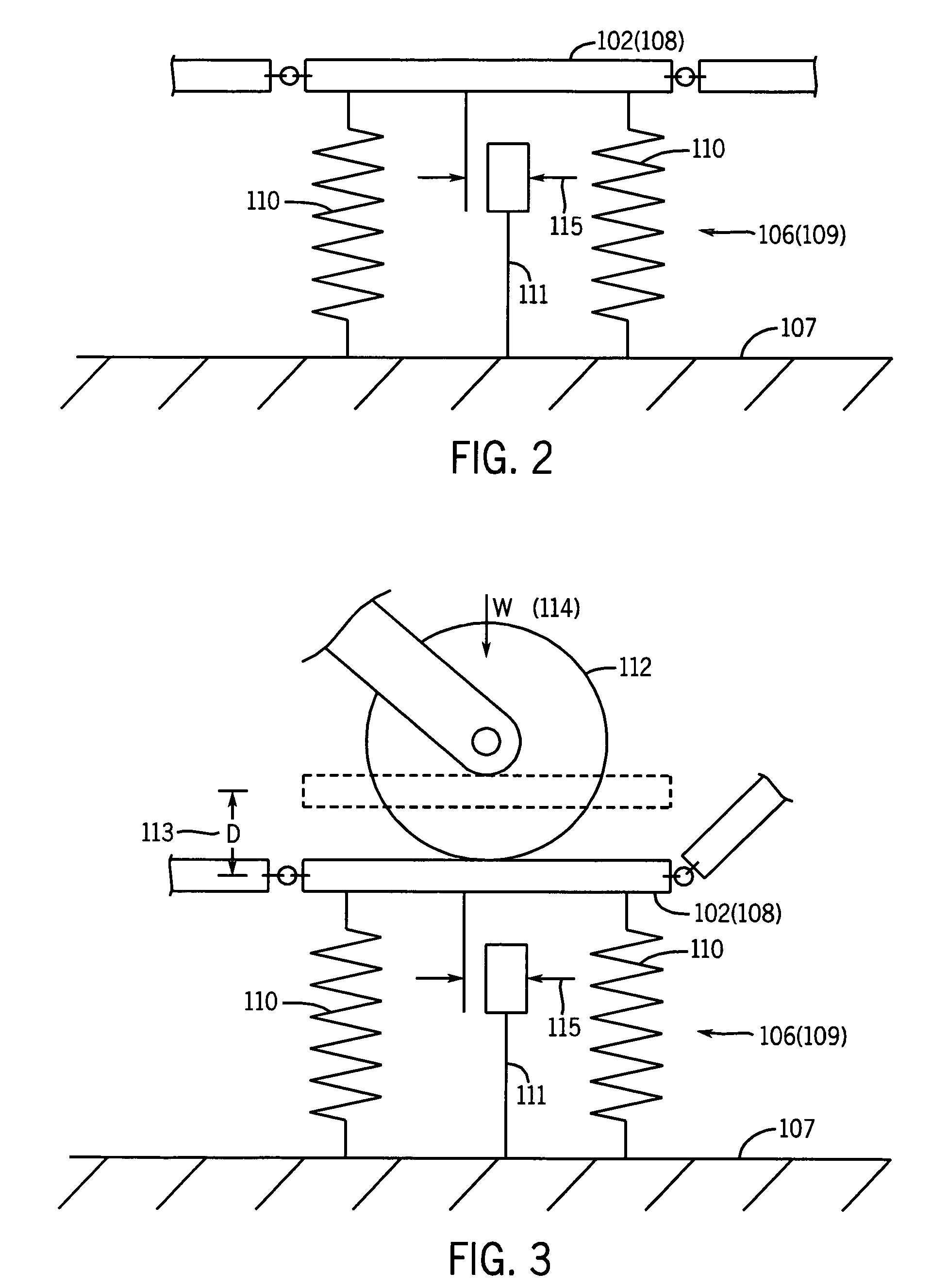Roadway for decelerating and/or accelerating a vehicle including an aircraft
a technology for accelerating and decelerating vehicles, which is applied in the direction of roads, traffic signals, transportation and packaging, etc., can solve the problems of easy sideways and slippage of tires, vehicle may easily be rendered minimally controllable, and vehicle experience a fairly bumpy ride, so as to reduce the required length of runways, minimize the braking system, and reduce the stress on the structure of the airplane
- Summary
- Abstract
- Description
- Claims
- Application Information
AI Technical Summary
Benefits of technology
Problems solved by technology
Method used
Image
Examples
Embodiment Construction
[0048]Although this invention is applicable to numerous and various types of roadways and surfaces, it has been found particularly useful in the environment of runways for aircraft. Therefore, without limiting the applicability of the invention to runways for aircraft, the invention will be described in such environment. Those skilled in the art will appreciate that the RAR of the present invention can be used on roadways for automobiles and trucks and for other wheeled vehicles. The RAR of the present invention can also be adapted for use with trains where the panels described below are proximate the rails upon which the trains travel.
[0049]A schematic of the side view of a preferred RAR illustrating its basic principles of operation is shown in FIG. 1. In this illustration, the RAR 100 segment is shown positioned at the end of a typical (fixed) runway 101. At the end of the fixed runway 101, one or more transition runway panels 102 are to be installed in a transition segment 103 o...
PUM
 Login to View More
Login to View More Abstract
Description
Claims
Application Information
 Login to View More
Login to View More - R&D
- Intellectual Property
- Life Sciences
- Materials
- Tech Scout
- Unparalleled Data Quality
- Higher Quality Content
- 60% Fewer Hallucinations
Browse by: Latest US Patents, China's latest patents, Technical Efficacy Thesaurus, Application Domain, Technology Topic, Popular Technical Reports.
© 2025 PatSnap. All rights reserved.Legal|Privacy policy|Modern Slavery Act Transparency Statement|Sitemap|About US| Contact US: help@patsnap.com



